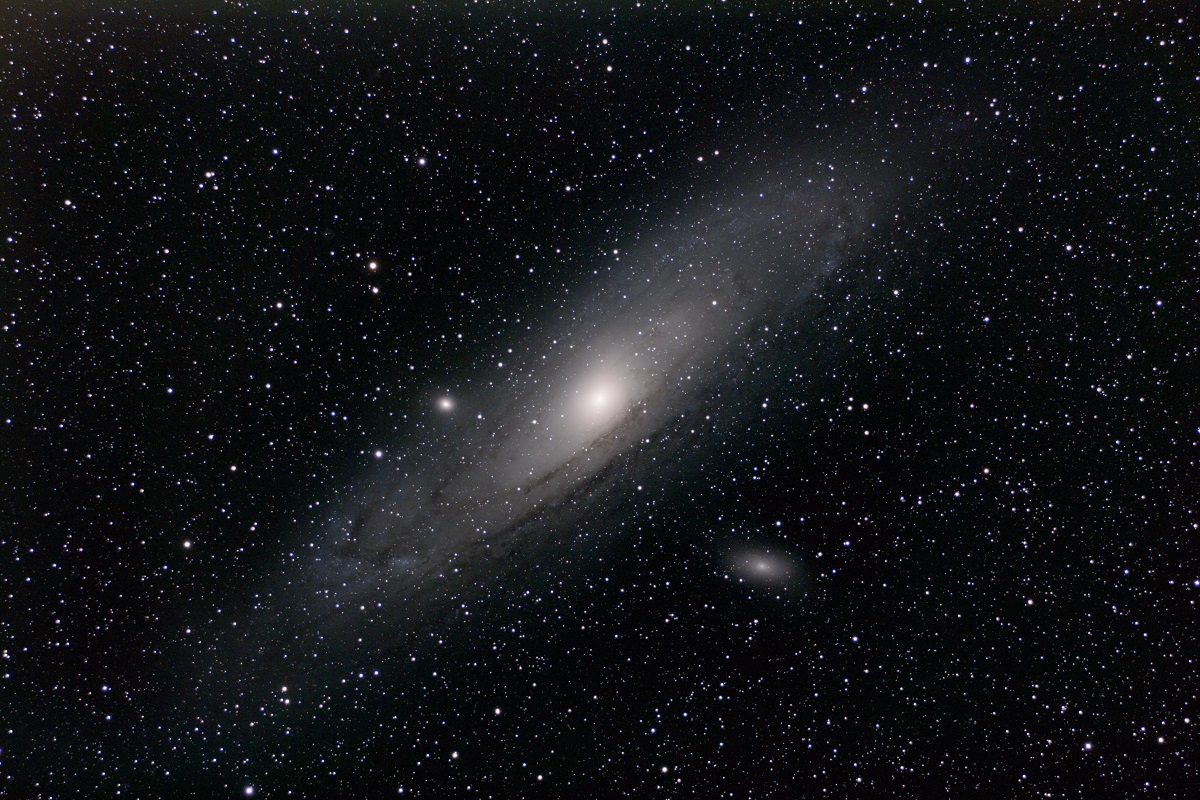Things can look calm and peaceful in the Andromeda Galaxy when you gaze up at it from the sky. However, if you know what to look for, there is evidence of a violent rumble in this galaxy’s past. This is according to research by Ivanna Escala, an astronomer at the Carnegie Institution for Science in Pasadena. She found telltale signs of a merger a few billion years ago. It was then that Andromeda actively cannibalized another galaxy.
Mergers create galaxies
When galaxies collide (and wouldn’t that be a good movie title?), they essentially gobble up the matter of everything around: the galaxies themselves, the globular clusters, the nebulae, whatever bothers them. They also push material quite violently sometimes. This produces profound disturbances following the collision. If you look at galaxy collision sites, you can find star birth nodes, for example. They bubble up when matter is compressed and shocked by collisional forces into active star-forming regions.
Collisional pileups
It also creates stellar associations called tidal features. They may look like streams or arcing star shells moving in the wake of the collision. Sometimes they create “piles” that look like ripples (or arcs of ripples) like when you throw a stone into a pond. If you know how to interpret these clues, you can understand something about the collisions that caused them.
That’s what Escala and his team did. “The remnants of each crash can be identified by studying the motion of stars and their chemical compositions,” she explained. “Together, this information serves as a sort of fingerprint that identifies stars that have joined a galaxy in a collision.”
Dive into the past of Andromeda
The Andromeda galaxy is about 10 billion years old. By comparison, the Milky Way galaxy is about 13.6 billion years old. Like most other galaxies, Andromeda grew through multiple collisions with smaller protogalaxies and subsequent mergers with larger ones. The Milky Way is currently engulfing at least one dwarf and also fusion-formed galaxy.
The trick to understanding the history of mergers is, as any crime scene detective knows, buried in the details. Astronomers examine the chemical constituents of stars and determine which are native to the galaxy and which are not. Stellar movements can reveal intruders. If the merger is particularly violent, streams of stars, gas and dust will form observable features.
Digging into the stars of Andromeda
Escala and his collaborators took a deep dive into Andromeda on a feature called the northeast plateau. They analyzed 556 branches of red giant stars. “We have performed the first detailed characterization of the chemical composition and geometric motion of stars in this region of our neighboring galaxy, conclusively demonstrating that the NE shelf is a tidal shell composed primarily of debris resulting from a collision,” Escala explained during a press conference at the American Astronomical Society meeting in Pasadena, California.

They also showed that this rim is part of a multi-shell system, along with the western and southeast shelves of the galaxy. The material in these regions is consistent with that of the giant stellar stream of Andromeda, created during recent large collisions. It is likely that all of these tidal features could come from the same source. “Our results are consistent with modeling that predicts the Giant Stellar Stream to be the first loop of material in a collision and the NE shelf to be the second enclosing layer,” Escala concluded. The wrap she mentions indicates multiple encounters during the collision/cannibalization event.
Gravitational interactions at the time shaped the flows. The analysis carried out by Escala and his team is an important step towards confirming predictions about the violent past of this galaxy. Collisions are an important part of this story. More evidence on these actions helps to better understand the many features left long after the merger was complete.
For more information
Trace the remnants of Andromeda’s violent history


